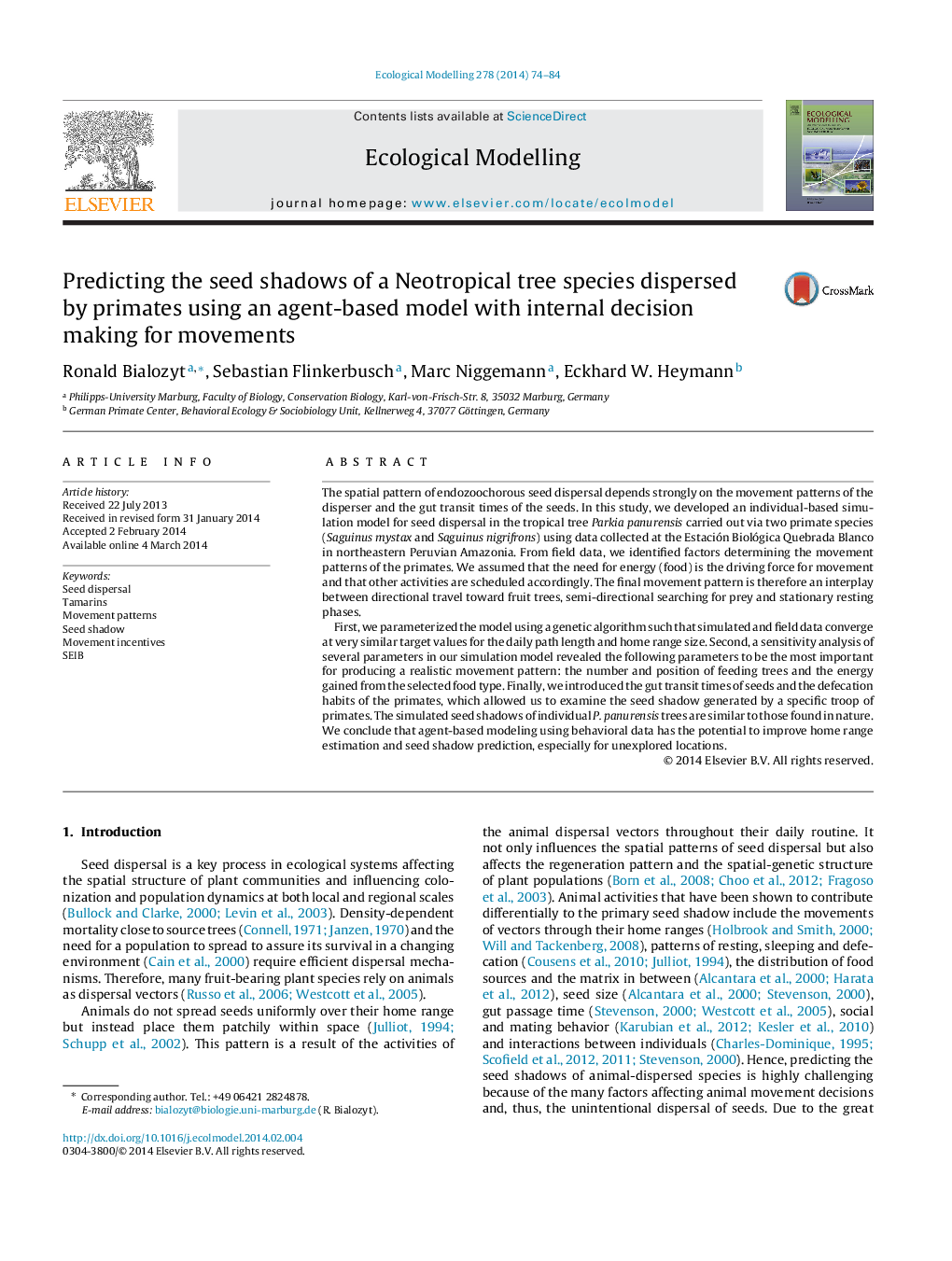| Article ID | Journal | Published Year | Pages | File Type |
|---|---|---|---|---|
| 6296878 | Ecological Modelling | 2014 | 11 Pages |
â¢We developed an IBM of tamarins' movements to predict spatial patterns of seed dispersal.â¢Decision process of monkey movement during daily routine is modeled using an IBM.â¢Choice of movement depends on individual's energy and two internal thresholds.â¢The most important parameter for realistic simulations is the energy gained in feeding.â¢Implemented seed dispersal does fit empirical kernels quite well.
The spatial pattern of endozoochorous seed dispersal depends strongly on the movement patterns of the disperser and the gut transit times of the seeds. In this study, we developed an individual-based simulation model for seed dispersal in the tropical tree Parkia panurensis carried out via two primate species (Saguinus mystax and Saguinus nigrifrons) using data collected at the Estación Biológica Quebrada Blanco in northeastern Peruvian Amazonia. From field data, we identified factors determining the movement patterns of the primates. We assumed that the need for energy (food) is the driving force for movement and that other activities are scheduled accordingly. The final movement pattern is therefore an interplay between directional travel toward fruit trees, semi-directional searching for prey and stationary resting phases.First, we parameterized the model using a genetic algorithm such that simulated and field data converge at very similar target values for the daily path length and home range size. Second, a sensitivity analysis of several parameters in our simulation model revealed the following parameters to be the most important for producing a realistic movement pattern: the number and position of feeding trees and the energy gained from the selected food type. Finally, we introduced the gut transit times of seeds and the defecation habits of the primates, which allowed us to examine the seed shadow generated by a specific troop of primates. The simulated seed shadows of individual P. panurensis trees are similar to those found in nature. We conclude that agent-based modeling using behavioral data has the potential to improve home range estimation and seed shadow prediction, especially for unexplored locations.
